Why is renewable energy important?
As attested in UN Sustainable Development Goal 7, ensuring that our power is being generated renewably is a vital part of meeting climate goals, whether national, international, or across individual organisations (White, 2024). Here at Newcastle University, lighting accounts for around 20% of our energy use alone, but electricity is also used to power many building’s heating, cooling, and ventilation systems, our fleet of electric vehicles, our PCs, server banks, lab equipment, and more. With so much of the University drawing on electrical power, therefore, generating renewable energy on campus can have a huge impact on reducing the emissions of our facilities and operations. One technology that has proven invaluable in our efforts to increase local renewable energy production is solar power.
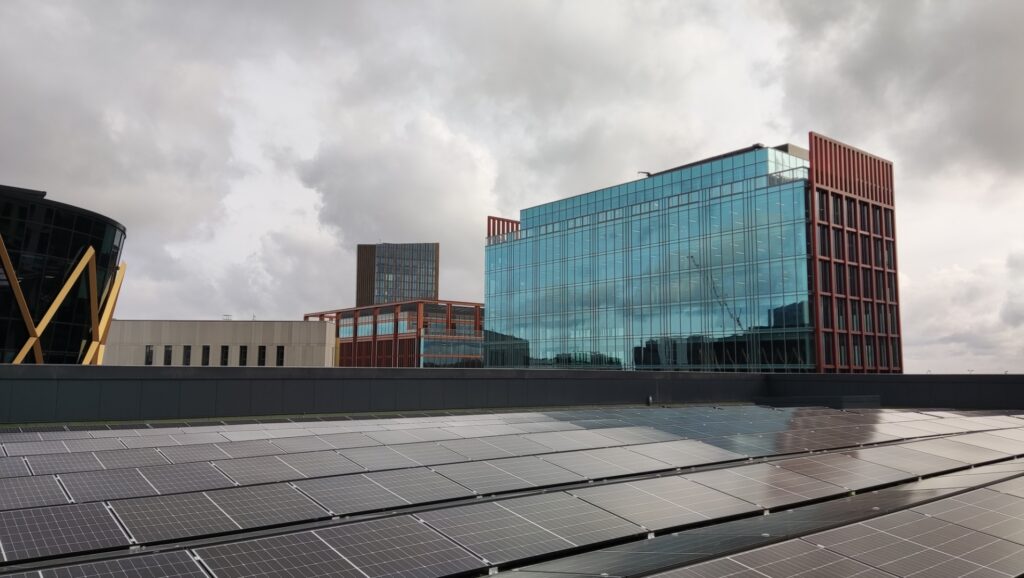
Image: A view of the Frederick Douglass Centre’s solar system with the Catalyst, Core, Lumen, and Spark buildings in the background. Credit: Author.
What’s happening at our university?
Solar Photovoltaics (PV) have been producing power since the 19th Century but have only really become commonplace in the last few decades as lowering costs and improving efficiencies have made the technology increasingly commercially viable (Mulvaney, 2019). One of the chief benefits of solar PV is its versatility. Solar arrays can produce power wherever there is good access to daylight (a full explanation of how solar PV works can be found in this blog) and can be deployed on building rooftops to easily integrate power production into dense urban environments (Hayat et al., 2019). This adaptability has allowed the University to install solar arrays on a wide variety of buildings across our city centre campus, and these systems generate power right where it’s needed most.
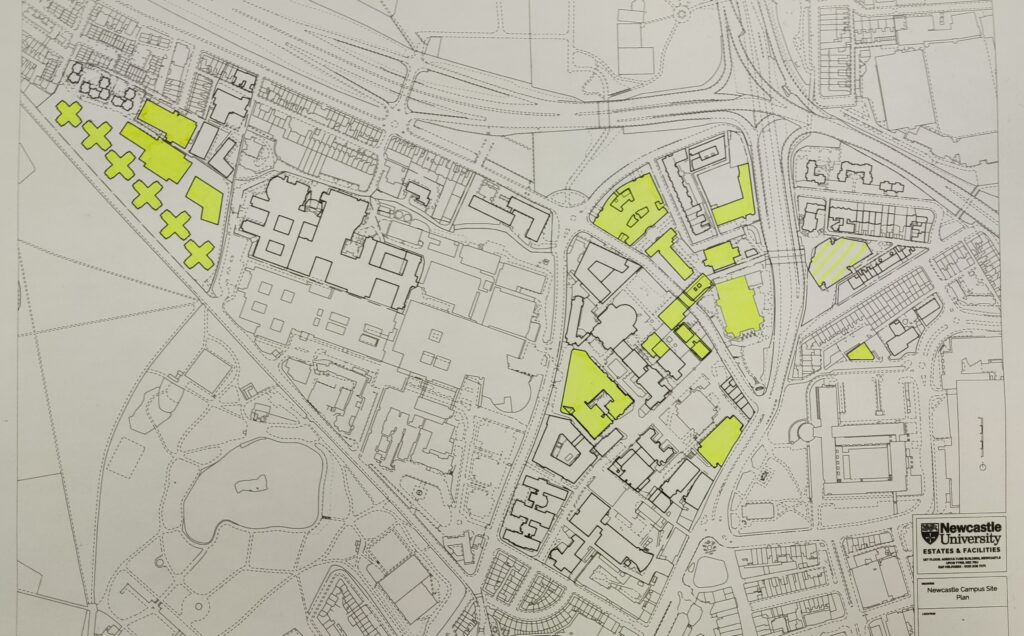
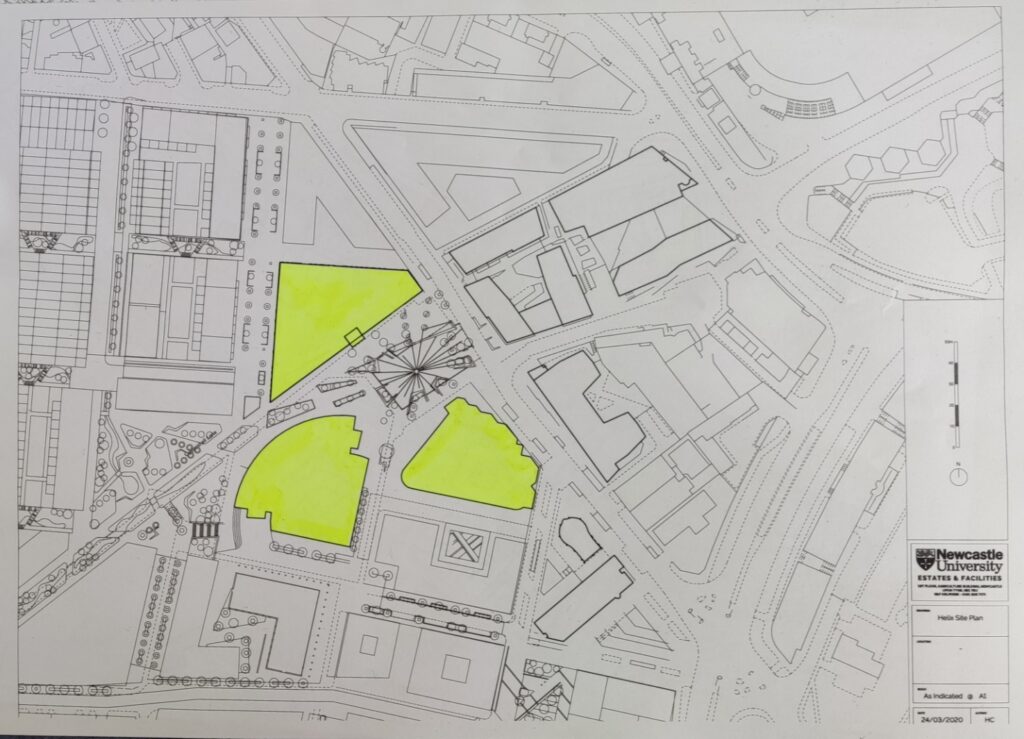
Image: Maps of the University’s city centre estates. University owned buildings have a thicker border around them, those highlighted in solid yellow have solar power systems installed, and those highlighted with yellow stripes have solar systems currently under construction. Credit: Author.
As the above maps show, solar arrays have been installed across campus including on buildings such as the Henry Daysh, Great North Museum Hancock, the Catalyst, and every block of the Park View Student Village. Our teams are also continually working to expand the amount of solar power we generate at the University and we’re currently constructing a new system on top of the Philip Robinson Library. Additionally, as we add new arrays, we’re constantly looking to expand their capacity and our recently finished Sports Centre system, now the largest at the University, generates as much power in under 2 days as an average UK household consumes in a year! Elsewhere, arrays have been designed to meet the entire daytime power demands of buildings – such as in our Frederick Douglass Centre, who’s generation data can be seen below.
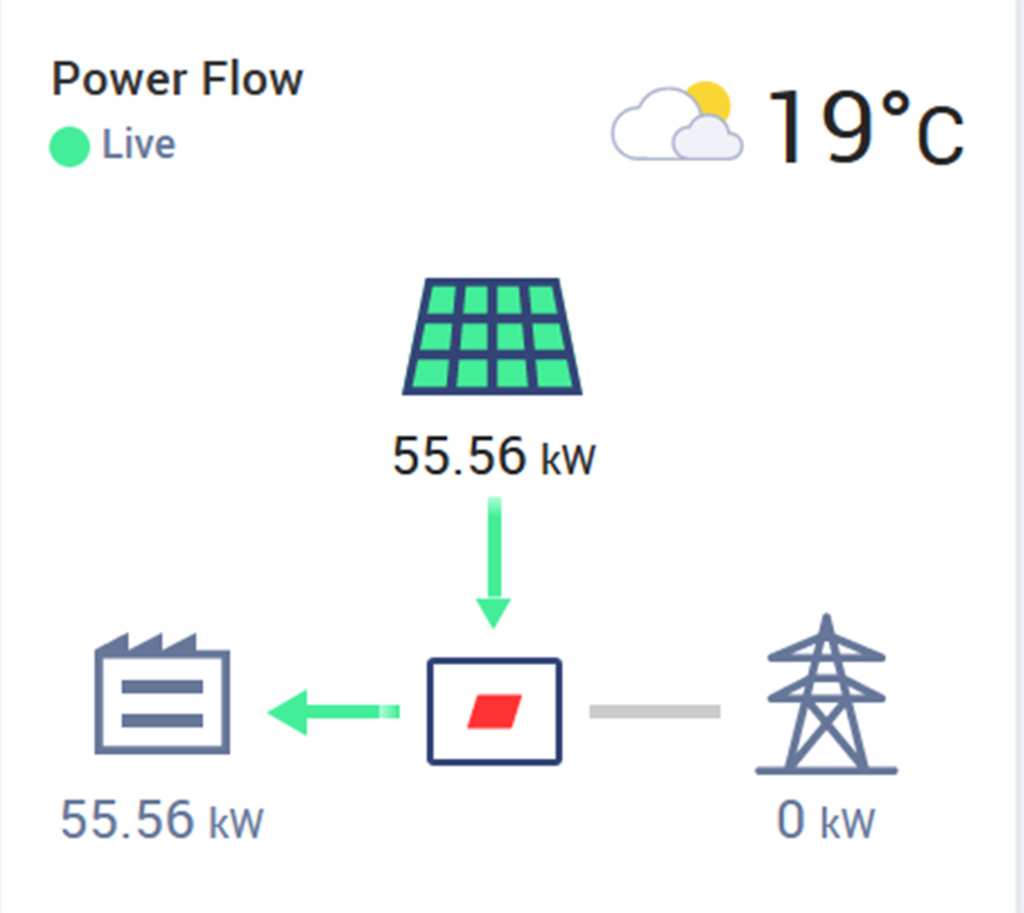
Image: A graphic displaying the amount of energy at the University’s Frederick Douglass Centre that is being pulled from the grid vs from the building’s solar array in the early afternoon of 13.05.2024 (note: all values are estimates). Credit: Author.
A combined approach
The effects of the University’s solar power arrays are already being felt across our organisation. In addition to the savings on energy bills these systems are creating, the University is also saving tens of thousands of kilograms of CO2e across our facilities. Following these successes, we’ll continue to install new solar PV systems across our campus and beyond while working to complement these projects with other renewable and low carbon infrastructure initiatives. Examples of these complimentary improvements include:
- Our low carbon factor combined heating and power engine in the Merz Court Energy Centre which utilises biofuel to provide electricity and hot water with a high degree of efficiency and a far lower comparative carbon footprint.
- Projects to link the district heating networks we have across our city centre campus, improving efficiencies and reliability as systems help to pick up each other’s slack and can optimise over a wider area.
- Our long-term campus-wide LED works to replace all indoor room lighting across our organisation with energy efficient LEDs. We’re now well over halfway through this decade long project!
- The energy supply deal we’ve struck with The Energy Consortium to supply our buildings and facilities with zero carbon power from the grid.
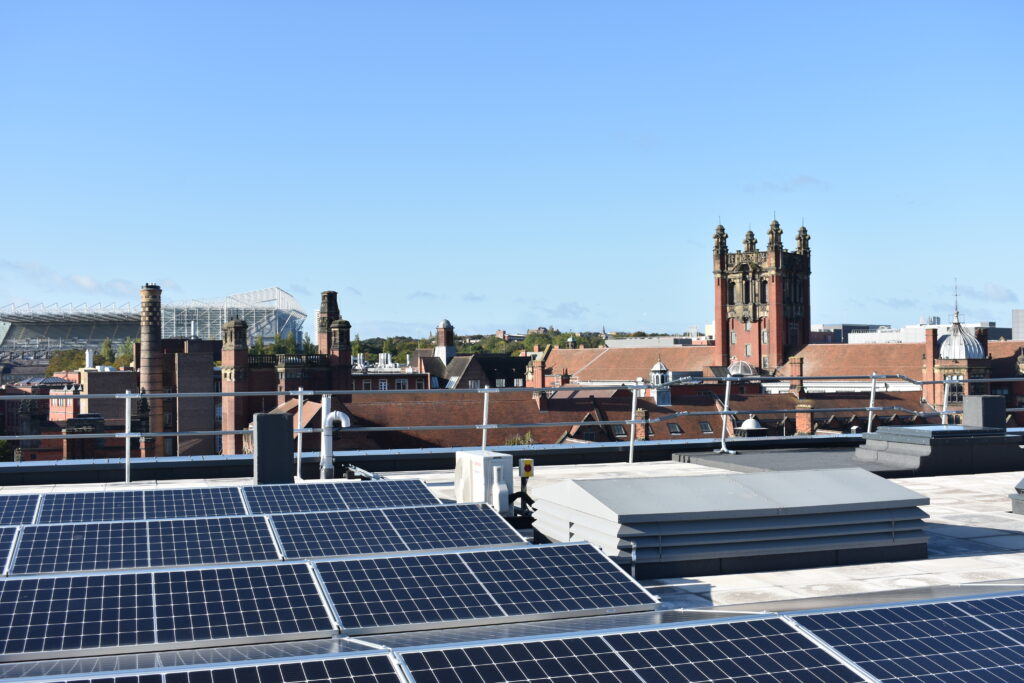
Image: Solar panels on top of the Henry Daysh Building with other University buildings, including the Bedson and Armstrong Buildings, as well as St James’s Park, visible in the background. Credit: Charlotte Robson.
Many thanks to Irene Dumistrascu-Podogrocki and Luke Whittaker for helping with this blog and enormous thanks also to colleagues from the various teams, including projects and improvements, that are working hard alongside ourselves to bring renewable and low-carbon power to our campus. If you’re interested in finding out more, our website has further information on carbon and energy, we have blogs on our energy management system and wind power at the University, and the Sustainability Network gives regular updates on our projects and work across campus.
References
Hayat, M.B., Ali, D., Monyake, K.C., Alagha, L., Ahmed, N. (2019) ‘Solar energy – A look into power generation, challenges, and a solar-powered future’, International Journal of Energy Research. 43 (3). pp. 1049–1067.
Mulvaney, D. (2019) Solar Power: Innovation, Sustainability, and Environmental Justice. 1st ed. Oakland, California: University of California Press.
White, J.K. (2024) The Truth About Energy: Our Fossil-Fuel Addiction and the Transition to Renewables. Cambridge: Cambridge University Press.
